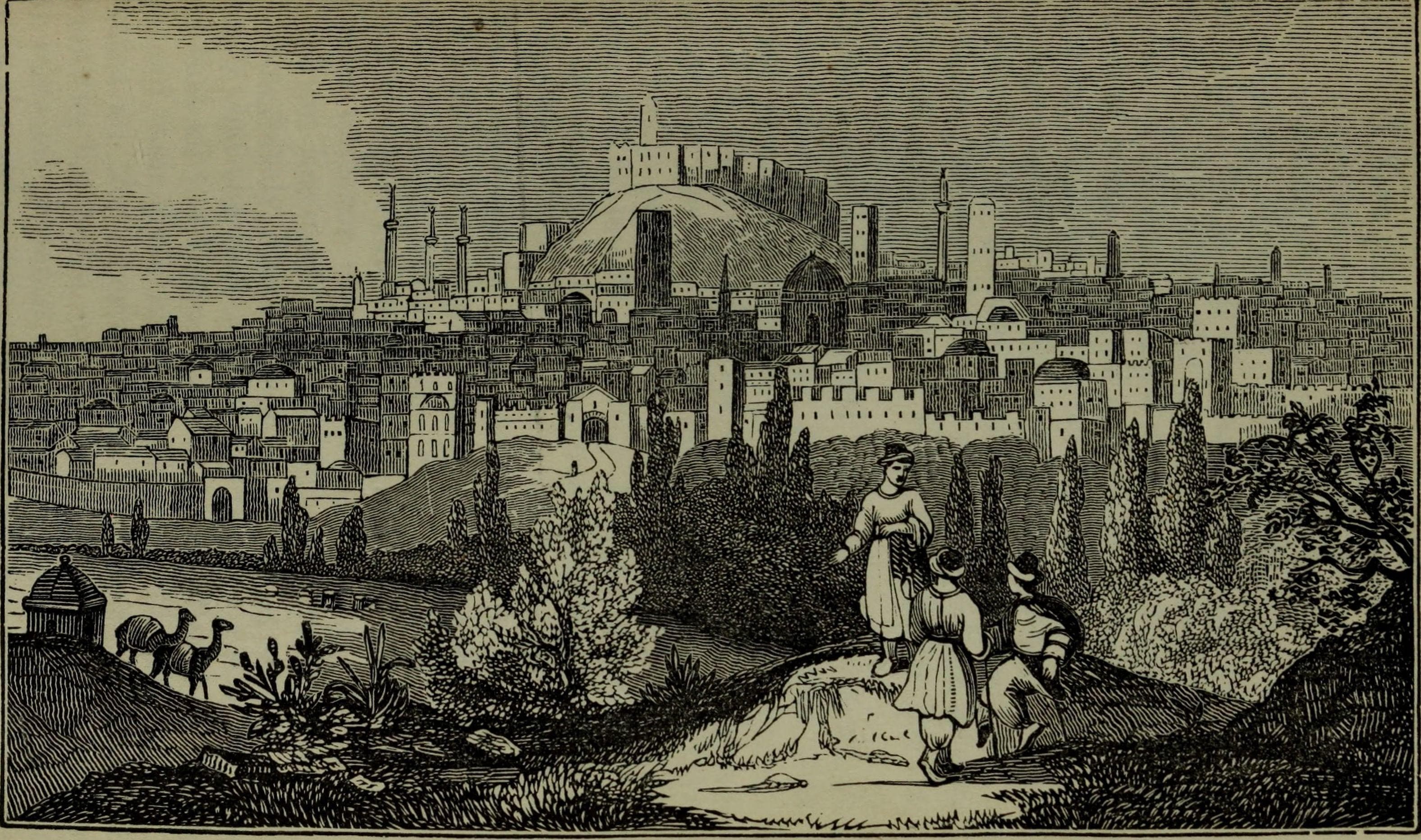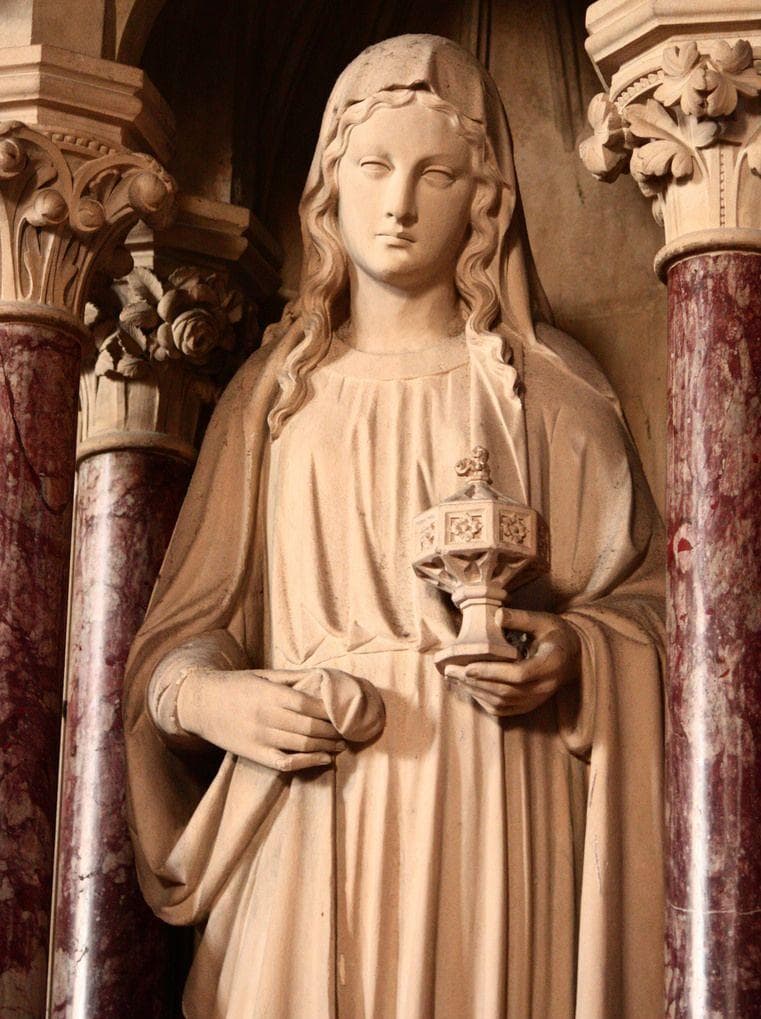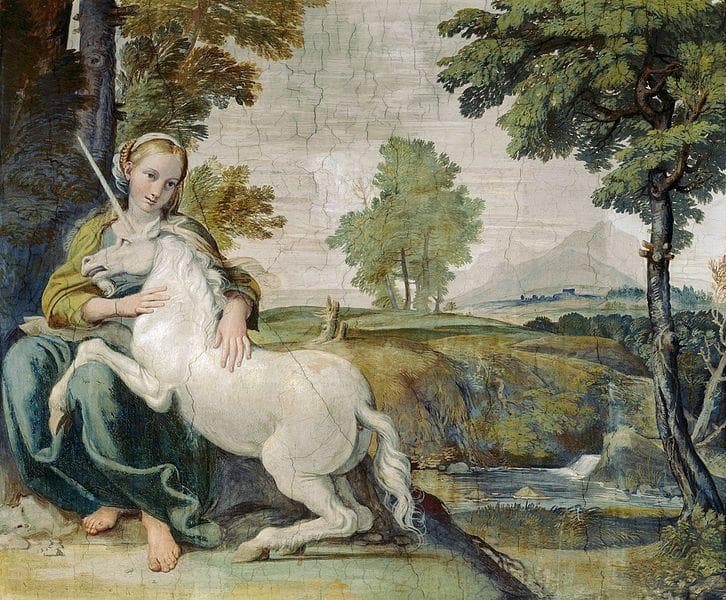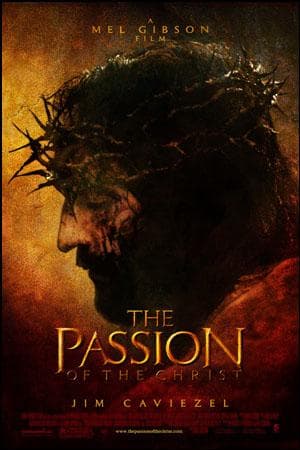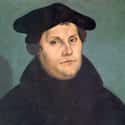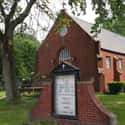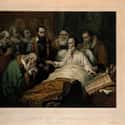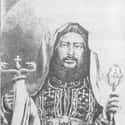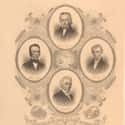-
(#1) Pentecostal Churches
When It Arose: Pentecostalism began in 1901, but didn't gain a broad following until the Azusa Street Revival in Los Angeles in 1906.
The Leading Figure: Pentecostalism developed over a long period, and countless preachers have contributed to it, but many credit Charles F. Parham and his student, William Joseph Seymour, with its beginnings.
Defining Beliefs: There are many expressions of Pentecostalist faith and many divergent churches within the movement. Typically, they follow most of the tenets of mainstream Christianity. One distinct feature of Protestant worship is "baptism in the spirit," which follows conventional water baptism. During this process, the Spirit of God enters the subject and possesses them, which is evidenced by speaking in tongues.
Unique Practices: Pentecostalism was founded around the practice of speaking in tongues. Protestant worship services tend to be informal yet intense, often dedicated towards bringing about an almost frenzied experience of God's presence.
Notable Members: Denzel Washington, Marvin Gaye, Megan Fox, Jerry Lee Lewis
-
(#2) Baptist Churches
When It Arose: The Baptist Church has its roots in the earliest days of the Protestant Reformation. The earliest Baptists fled religious persecution in England in 1607, though the church saw its greatest growth in the 19th century.
The Leading Figure: The church was started by a minister named John Smyth. Smyth rejected the remaining traces of Catholicism in the Church of England and performed the radical act of baptizing himself. He was rejected by the church and fled to Holland.
Defining Beliefs: Baptists have no hierarchy. While there are some preachers, nobody is considered "above" anyone else. They believe everyone is responsible for their individual relationship with God.
Unique Practices: As might be expected, the Baptists' core practices revolve around the full immersion of adults in baptism. They believe children cannot fully agree to commit themselves to Jesus, and so they must be baptized as adults. In addition, they believe full immersion in the water is faithful to the original baptism of Jesus by John the Baptist.
Notable Members: Jimmy Carter, Bill Clinton, Brad Pitt, Britney Spears
-
(#3) Lutheran Churches
When It Arose: Lutherans are the oldest branch of Protestantism, dating all the way back to the original teachings of Martin Luther, who nailed 95 theses to the door of the church in 1517.
Leading Figure: This branch follows Martin Luther, the theologian who originally rebelled against the hegemony of the Catholic Church. Luther's core idea was that individuals should be trusted to find their own salvation in the Bible, rather than trusting corrupt priests.
Defining Beliefs: Despite his rebellion from the church, Luther was a strict and conservative theologian. He clung to a strict, literal, and inerrant view of the Bible, which led him to teach that Jesus's body and blood are literally present during communion. He also believed baptism was absolutely necessary for salvation.
Unique Practices: Unlike most other Protestant denominations, Lutherans maintain many of the practices of Catholicism, including the altars and vestments. Their focus on the sacraments of communion and baptism also sets them apart.
Notable Members: Johann Sebastian Bach, David Letterman, Bruce Willis, Dana Carvey
-
(#4) Methodist Churches
When It Arose: Like the Baptists, the Methodist Church splintered off from the Anglican Church. It began properly in 1738, when the Anglican minister John Wesley had a vision that transformed his faith.
Leading Figure: The church was started by John Wesley, an Anglican minister whose methodical study of the Bible gave the church its name.
Defining Beliefs: The Methodists have, from their inception, believed in the importance of good works and personal responsibility. As a result, Methodists have historically been involved in charitable projects and avoided alcohol. Methodists, unlike some other sects, believe in both original sin and universal salvation.
Unique Practices: Methodists are a powerfully evangelical branch, active in charity, politics, and the business sector. Their services are distinguished by a focus on hymns and singing, one of Wesley's favorite forms of worship.
Notable Members: George W. Bush, Beyonce Knowles, Christopher Walken, Hillary Clinton, Rosa Parks
-
(#5) Calvinist Churches
When It Arose: Calvinism began with the writings of John Calvin who worked until the end of his life in 1564. Calvinism grew after the scholar's demise, and eventually it became one of the largest Christian denominations.
Leading Figure: This branch is named after John Calvin, who spent much of his life codifying the tenets of the faith.
Defining Beliefs: Calvinism's most contentious belief is predestination. This belief states that God selected those who would be saved long before the creation of the world. Technically speaking, this belief was common at the time, but Calvin made it a centerpiece of his writing, and Calvinists have clung to it throughout the centuries while other denominations abandoned it.
Unique Practices: In terms of worship, Calvin believed in reducing the clutter of traditional mass and bringing worship back to a simple glorification of God.
-
(#6) Evangelical Churches
When It Arose: Evangelicalism is a broad movement, rather than a specific splinter group. The major strands that would become modern evangelicalism began to develop in the 17th century.
Leading Figure: The founders of the Evangelical movement were a series of men who had various spiritual crises that led them to strike out on their own, eventually coalescing into what is now considered Evangelicalism. These men included John and Charles Wesley, George Whitefield, and Jonathan Edwards.
Defining Beliefs: Evangelicals have four core beliefs: conversionism (one must be born again), activism (one must spread the Word of God), Biblicism (the Bible is inerrant), and crucicentrism (the crucifixion is the central moment of the faith).
Unique Practices: Evangelical churches run the gamut from deeply fundamentalist to liberal. As such, the only practice common to all of them is evangelizing, which essentially means spreading the faith.
-
(#7) African-Initiated Churches
When It Arose: Like the Evangelical churches, the African-Initiated Churches (AIC) are a loose coalition of interrelated churches and have no fixed origin. Some sources place the date of formation around 1870.
Defining Beliefs: Most of these churches are syncretic, which is to say they fold native African beliefs into the Christian Church. One of the strongest threads holding the AIC churches together is their rejection and persecution of witchcraft, the extent of which some scholars have dubbed it the "Witchcraft Eradication Movement."
Unique Practices: Because of this emphasis on witchcraft, exorcisms play a much bigger role in AIC church life than other Protestant denominations. While they believe in and venerate the godhood of Jesus Christ, their worship services tend to focus more on the Holy Spirit.
-
(#8) Presbyterian Churches
When It Arose: While its origins in Scotland are ancient, the church properly began when John Knox presented his declaration of faith to Scottish Parliament in 1560.
Leading Figure: While the Church was heavily influenced by John Calvin, its proper founder is the Scottish theologian John Knox, who clarified its principles in his declaration "The Scots Confession."
Defining Beliefs: The church accepts many mainline Christian beliefs, including predestination and the literal presence of Christ during communion. Presbyterians are also particularly committed to the idea of reform in the face of new insights and challenges, making them one of the most modern of the Protestant denominations.
Unique Practices: Unlike most churches, Presbyterians operate democratically, which is to say they vote both for their ruling elders and large-scale matters of policy. In 2014, the congregation voted to allow same-sex marriages in the church.
Notable Members: Abraham Lincoln, Jimmy Stewart, John Wayne, Ronald Reagan
-
(#9) Anabaptist Churches
When It Arose: The Anabaptists arose in the heart of what is now Switzerland and were one of the earliest offshoots of Protestantism. It arose around 1522, when a few powerful religious thinkers broke with Martin Luther on a number of important theological points.
Leading Figure: Conrad Grebel was a theologian who at first supported Martin Luther, but grew disappointed with the development of the Protestant faith. He was among the first to perform a second baptism, thereby giving the group its name: the Anabaptists, which means "baptized again."
Defining Beliefs: In the beginning, the Anabaptists were defined by their belief that infant baptism is unscriptural. They were also unique in their complete rejection of the Old Testament, wanting to base the entire theology only on the New Testament.
Unique Practices: The second baptism was the Anabaptist's original unique practice, but it has become commonplace among different offshoots of the faith. The early Anabaptists were also known for their asceticism and communism.
Notable Members: While there were many famous Anabaptists of previous eras, such as Jan van Leiden and Felix Manz, there are no longer many public figures who openly identify as Anabaptist.
-
(#10) Seventh-Day Adventist Churches
When It Arose: Adventism has its roots in upstate New York in the 1860s. The Seventh-Day Adventists became the largest of a number of Adventist Groups who believed Jesus's coming was imminent.
Leading Figure: The first major Adventist prophet was William Miller, who was followed by Ellen G. White. White's works form the bulk of the theology that distinguishes Seventh-Day Adventists from other Protestant denominations.
Defining Beliefs: While they agree with most mainstream Christian beliefs, the Adventists have a few extra tenets, mostly derived from the work of Ellen G. White. Among these beliefs is the idea that upon life's end, souls are kept in limbo until the final coming of Christ.
Unique Practices: Seventh-Day Adventists keep the Sabbath from sunset on Friday to sunset on Saturday. This is an important part of their understanding of the six-day creation cycle, and it changes the nature of their liturgy.
Notable Members: Prince, Malcolm X, Ben Carson, Magic Johnson
-
(#11) Apostolic Churches
When It Arose: In 1909, the first of the Apostolic churches began to break away from their Pentecostal roots. At first, these churches, located predominately in England, seemed to simply be a Pentecostal group, but over the next decade, they grew to be a distinct denomination.
Leading Figure: The first Apostolic church was founded by William Oliver Hutchinson, who was quickly joined by the Welsh clergyman Daniel Powell Williams.
Defining Beliefs: Apostolic and Pentecostal churches share many beliefs, and their differences can seem minute and trivial to outsiders. For example, Apostolic churches believe the Trinity is not distinct, rather it is three names for one being.
Unique Practices: Apostolic churches baptize their members only in the name of Jesus, not in the name of the Father, the Son, and the Holy Ghost.
-
(#12) Anglican Churches
When It Arose: Henry VIII did not receive papal dispensation to divorce his wife, and so he separated England from the Vatican's influence. The real tenets of Anglicanism were developed for years after this separation, due to the patient efforts of clergymen.
Leading Figure: Technically, Henry VIII is the founder of the church, but the clergyman Thomas Cranmer earned the credit. Not only did he push Henry's son, Edward VI to attach some Protestant principles to the Anglican church, he was heavily involved in the composition of the Book of Common Prayer, a foundational document of the Anglican Church.
Defining Beliefs: One of the defining characteristics of the Church of England is its close ties to the government of England. The current monarch is still the Supreme Governor of the Church and Defender of the Faith, though she exercises little power.
Unique Practices: Thomas Cranmer was heavily influenced by the Benedictine monks, and there is a heavy emphasis on public and private prayer among the Anglicans.
Notable Members: Humphrey Bogart, Kate Winslet, Theodore Roosevelt, Robin Williams
-
(#13) Quaker Churches
When It Arose: Long before they were the Quakers, they were called the Religious Society of Friends. The Society was formed in the mid-1600s, a period of great turmoil in England, by people searching for a more direct and communal experience of God.
Leading Figure: George Fox is credited with founding Quakerism. As a young man, he traveled England and met many people who wanted a different kind of religious experience. Fox was persecuted for his beliefs, but he succeeded in founding and propagating the Quaker faith.
Defining Beliefs: The cornerstone of the Quaker faith is the belief God exists in every person. As such, they believe in pacifism, communal worship, and living a simple life.
Unique Practices: The Quakers are a large and varied group of worshippers, but there are some distinct practices. For example, common Christian holidays, like Easter and Christmas, are not celebrated within the Quaker community. They have no clergy or liturgy, and their meetings are often silent.
Notable Members: Richard Nixon, James Dean, Edward Murrow, Annie Oakley
-
(#14) Restoration Churches
When It Arose: The "Restoration Movement" reached its peak in the early 1800s, when six different churches arrived at the same ideas, completely independent of each other.
Leading Figure: The founders of the Restoration Movement are generally considered to be the leaders of the six original Restoration churches: James O'Kelly, Abner Jones, Elias Smith, Barton W. Stone, Alexander and Thomas Campbell, and the various leaders of the Scotch Baptist Movement.
Defining Beliefs: Members of the Restoration Churches see themselves as returning to the original New Testament faith. This faith in the New Testament church defines them.
Unique Practices: The Restoration movement posits four things that are necessary to remain a Christian: prayer, Bible study, worship, and faithfulness.
New Random Displays Display All By Ranking
About This Tool
There are many religions in the world. Christianity, as one of the world's three major religions, is divided into three major schools, namely Catholicism, Protestantism, and Eastern Orthodox. Including the new sects that broke away from Catholicism in the European Reformation Movement in the 16th century: Lutheran, Calvinist, Anglican, and more branches that have been continuously divided from these sects. Different Protestant branches differ in etiquette, priesthood, organizational structure, and festivals, and sometimes internal disputes arise.
Although the Catholic Church does not recognize the pope status of the Roman bishop, the Protestant Church still has a great influence. Protestants are mainly distributed in Britain, Germany, Switzerland, the five Nordic countries, Canada, Australia, and other countries. The random tool introduced 14 major differences among the branches of Protestantism.
Our data comes from Ranker, If you want to participate in the ranking of items displayed on this page, please click here.



